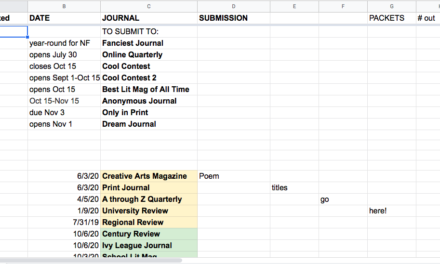
Assistant Editor Toni Judnitch: Tell someone you grew up in the middle-of-nowhere Midwest, and they might picture endless farmland, boredom, bumbling yet jolly townsfolk (possibly eating something deep fried), more farmland, etc. And they might be partially right. There wasn’t much for me to do in 1990s Minnesota, sure, but while those on the coasts (and yes, I’ll say it, the literary community) often seem to enjoy referring to the Midwest as flyover country, a place lacking interest, somewhere to be easily and happily avoided, I still can’t help but think of the Midwest as completely, wonderfully, and strangely magic.
When reading submissions for The Cincinnati Review, I often encounter the same settings over and over: offices, boring and soulless suburban homes, dive bars, various vacation spots, vague cityscapes (or New York City—the big kahuna itself). These settings aren’t bad in and of themselves, but what they often lack is a sense of imagination, of metaphorical weight, of surprise.
In his essay collection The Half-Known World, Robert Boswell discusses the joys of not entirely knowing the worlds he creates. While we often teach young writers to “flesh out” their characters and spaces, Boswell argues that the lack of complete knowledge of a place or a character can lead to magic on the page. Not knowing gives writers opportunities to surprise themselves.
Boswell also offers readers another strategy: “My advice is to go over your drafts and look for the shimmer—the bridge—moments that encourage you to show a glimpse of another world.” I think about this recommendation a lot, particularly in relation to my own midwestern upbringing. We explored our (seemingly limited) world in ways that allowed us to see it as something new and exciting. We found houses sinking in muck and abandoned developments, swam in water so green with algae we didn’t notice the bloated bodies of carp half our size floating next to us until their slick skin pressed into ours. This newness, this wonder at discovering something different in the familiar, has become something I strive for in my own work. It’s also what I look for when I’m reading the work of others. Where is the shimmer? What happens when we cross the bridge into the strange, the unfamiliar?
Our fiction editor, Michael Griffith, who has, in the past, taught an entire graduate course on what writers can discover by simply walking and thinking (and has a book forthcoming inspired by walks through a local cemetery) told me in a recent email exchange:
. . . students (and sometimes we teachers) tend to define [setting] too narrowly, as just a physical place. But setting is, as Carmen Maria Machado says, “not inert.” It includes not just place but time, and beyond that tone and angle of vision; it is, Machado continues, “activated by point of view.” I might even go a step farther and say that setting, used well—an example that comes immediately to mind is William Maxwell’s So Long, See You Tomorrow—is an element of point of view.
Setting isn’t just a stage upon which our characters walk; it is part of the bones of the story itself. My advice to writers, then, is to go out into their spaces, midwestern or not, urban or rural or somewhere in between, and try to see their worlds with new eyes. Look for that shimmer. Walk into the Lucky Cat Museum or run-down pet store or the tiny bodega whose storefront window also advertises white jeans for sale. Or better yet, allow your characters to enter those spaces. Incorporating that feeling of wonder into our work sets the foundation for creating settings that bring something deeper, more meaningful, something positively electric.
So go on! Get out there and explore (while wearing a mask and staying six feet away from others)! Or stay in and force your characters into spaces that put pressure on them to act, places you haven’t seen yet in other stories. Find a bridge to somewhere new. Take a chance, cross it, and see what discoveries await you on the other side.











